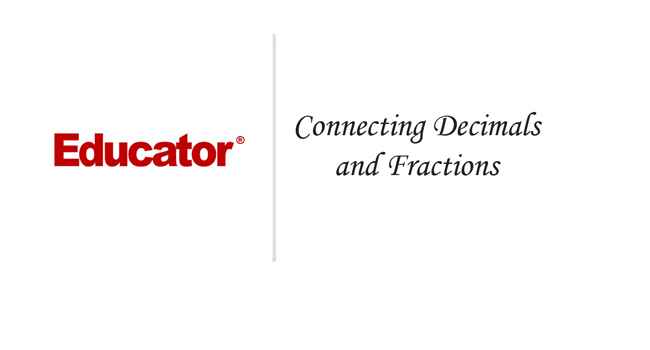Connecting...

This is a quick preview of the lesson. For full access, please Log In or Sign up.
For more information, please see full course syllabus of Basic Math
For more information, please see full course syllabus of Basic Math
Basic Math Connecting Decimals and Fractions
Lecture Description
In this lesson on connecting decimals and fraction, our instructor first begins by explaining decimals and fractions. Then she dives into converting decimals to fractions and fractions to decimals. She does more examples of decimals and fractions. Four complete and helpful extra video examples round up the rest of this lesson.
Bookmark & Share
Embed
Share this knowledge with your friends!
Copy & Paste this embed code into your website’s HTML
Please ensure that your website editor is in text mode when you paste the code.(In Wordpress, the mode button is on the top right corner.)
×
Since this lesson is not free, only the preview will appear on your website.
- - Allow users to view the embedded video in full-size.
Next Lecture
Previous Lecture










































 Answer Engine
Answer Engine



1 answer
Last reply by: Hubery Yang
Fri Sep 25, 2020 10:27 AM
Post by Anders Jensen on September 8, 2017
so... 1/20 = .05 bc, if 1/10=.1 then half of .1 is... .05?
1 answer
Mon Oct 26, 2015 6:48 PM
Post by EN N on October 26, 2015
Hi Mary, there's a mistake in the practice questions section. The last question says, 'Convert from decimal to fraction: [16/100].' It's supposed to be convert FRACTION to DECIMAL.
1 answer
Last reply by: Hong Yang
Wed Nov 27, 2019 8:45 AM
Post by Wasay Ahmad on February 4, 2013
yah i saw that too it got me confused a little bit until i looked back.
0 answers
Post by Victor Castillo on January 24, 2013
You said .07 when you meant .7.....